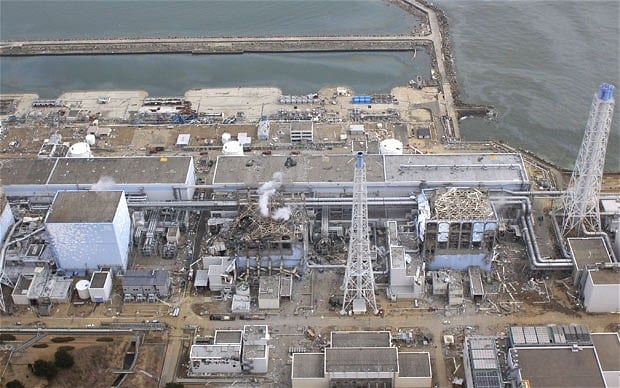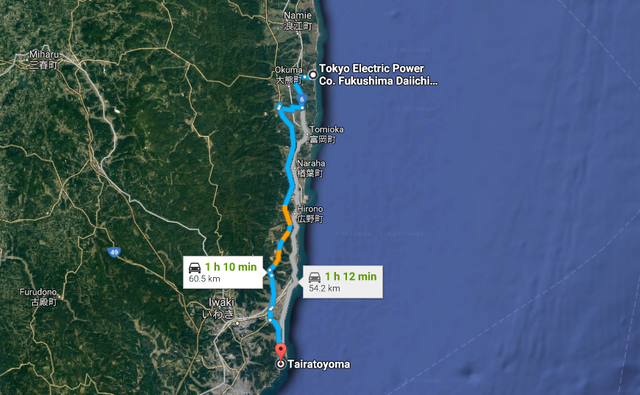Surfing Fukushima: Passion Outweighs Risk

“I’m worried, but not enough to stop surfing"

A handful of Japanese surfers are risking it all and continue to surf the breaks neighboring Fukushima despite the obvious risks.
Most people will shake their heads and call them fools, but as a long time surfer, I get it.
In the face of serious health concerns, these surfers feel the risk is worth it. In their minds, NOT surfing has the potential to do even greater damage to themselves by taking away their passion, identity, lifestyle and source of bliss.
Seeping Radiation

Six years after the 9.0 magnitude earthquake, the Tokyo Electric Power Company’s (TEPCO) Fukushima Daichi plant remains a contaminated wasteland and an impossible conundrum for Japanese authorities. Even now, accessing and removing the melted fuel rods from the cores of 3 reactors is extremely problematic Radiation levels are so high, in fact, that specially designed robots are neutralized before they even reach the reactors. One of the biggest concerns is continuous leakage of contaminated cooling water seeping into the Pacific oceans. TEPCO finally admitted to the fact after years of refuting the issue. TEPCO’s ability to handle the situation also continues to be a major source of concern.

[TEPCO] admitted that one of the huge tanks storing highly radioactive water at the plant, around 50 km to the north, was leaking.
It is believed that around 300 tons of toxic water had seeped out of the vast container — one of around 1,000 on the site — by the time anyone noticed
Some apparently made its way through drainage ditches to the Pacific Ocean.
Tons of radioactive water have also leaked into the earth beneath the plant, where it has mixed with groundwater that is flowing into the Pacific.
Tepco estimates that hundreds of tons of this groundwater makes its way into the ocean every single day, where its radioactive load is dispersed. The utility claims this water is not so heavily polluted
Source: Japan Times
Source: Daily Mail

It's almost impossible to measure the damage to the natural environment caused by the meltdown/partial meltdown of the Daiichi reactors. What has been clear since the quake, is that Fukushima has changed forever and will never be the same.
The Few, The Brave
About an hours drive south of the Daiichi TEPCO nuclear site, Tairatoyoma beach meets the visiting swells of the Pacific ocean and was once host to a thriving surf community and several surf competitions. The surfing community has understandably been drastically reduced in the area but a minority of local surfers have made the decision to disregard danger and brave exposure to potentially radioactive waves.


Everyone has their personal motivations but, in the end, it comes down to lifestyle, identity, passion and bliss.
Seasoned surfers will understand the ceaseless allure (magnetic pull) of the ocean. The zenned-out bliss of walking on water, riding the natural flowing pulses of the sea.
The younger generation has not returned to the beaches to tempt fate, rather it is the elder statesmen of the sport who are taking the plunge.
They reason they have less to lose if they’re exposed than their younger counterparts.
“They [surfers] say their passion is bigger than the risks and the truth will only be known in 20 years.”
Source: Next Shark

Measurements taken before the latest leak was announced showed 1 liter of seawater contained 6.22 becquerels of cesium — below the 10 becquerel per liter safety limit imposed by Japanese authorities.
“I’m worried, but not enough to stop surfing,” said Naoto Sakai, 31, who comes to test himself against the waves at least three times a week.
“If I worried about what I eat and where I live, I think I would become too stressed. I just try not to think about it too much.”

Toshihisa Mishina, 42, got back in the water again last year but says there is no way he would let his 12-year-old child join him.
“I worry about the youngsters because if they are exposed to radiation now, it might affect them when they grow up,” he said.
Surf at Own Risk

I know many of you still believe this is pure folly, even suicidal.
Even so, I believe this is inspiring and, to a greater extent, life affirming.
These surfers are not Kamikazes, they know the risks. They're simply choosing a better life for themselves.
If surfing brings more pleasure to their lives, even a shorter life, it's preferable to the alternative.
Let me offer an analogy, it's like asking a bird not to fly.
To live a fuller life, moment to moment, a life connected to the natural world, to the sea, deriving pleasure from simple acts, is perhaps understandable to all, not exclusive to a handful of surfers.
To sit idle, to deny passion, to avoid risk... is a life unfulfilled, a life unrealized, a life not lived.

Photo Credits:
Japan Times
Al Jazeera
nextshark.com
Michael Dyrland @ Featureshoot.com
Congrats you have been selected as Author of the day by the Steemvoter (SV) Guild, keep up the good work and helping make Steem great!
Note: You should receive many guild votes in an hour or so, enjoy!
Oh What!? Noice...
Thanks to the few people who read my post:)
I have seen reports that the Japanese already test very high for uranium internally do to eating sea food (big part of their culture) so I would think simply eating sea food there is much more hazardous than the surfing
Note - I am no expert and another great post @v4vapid